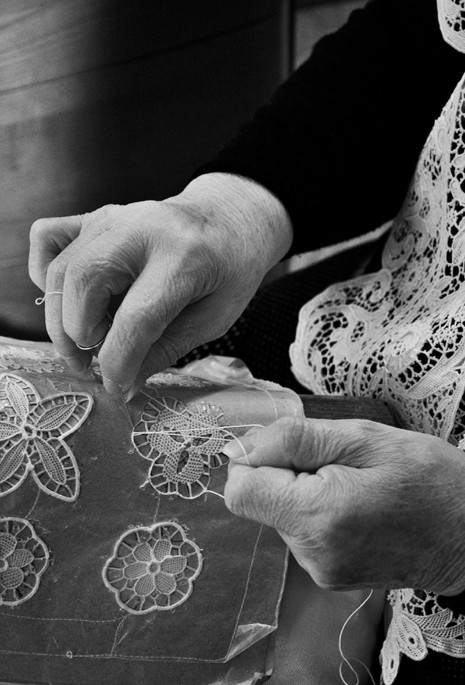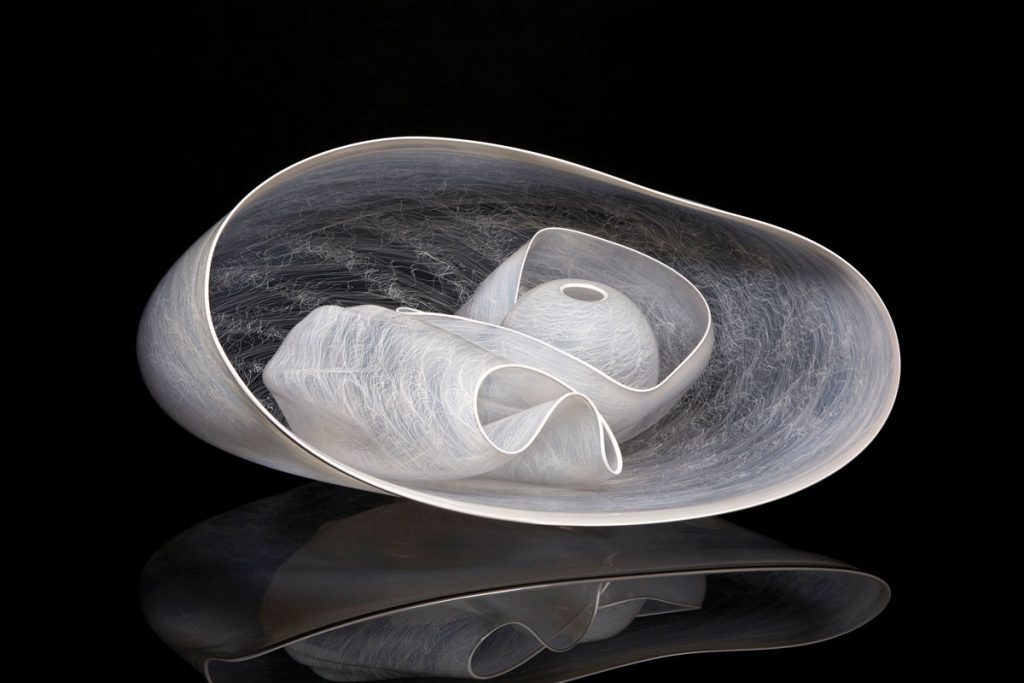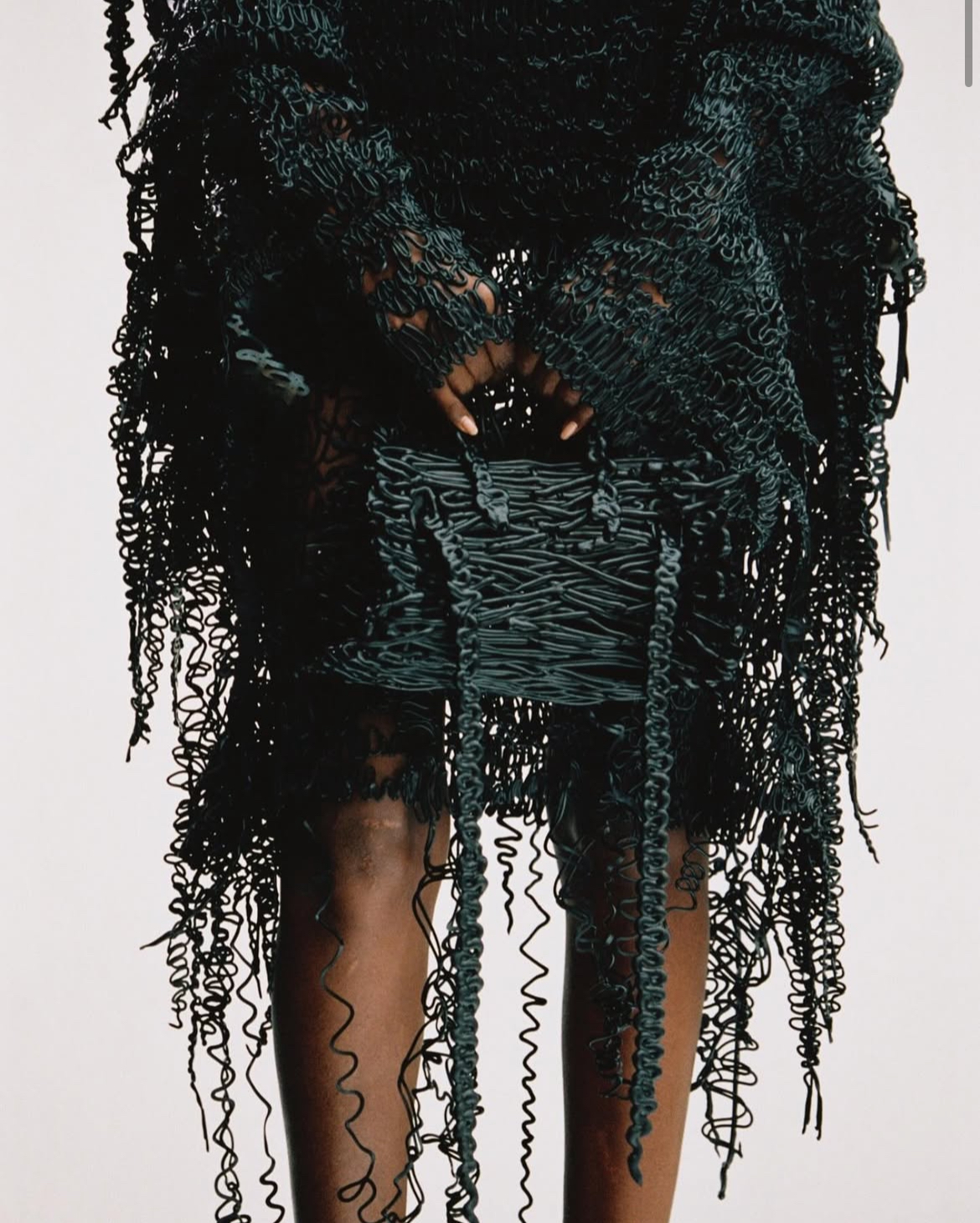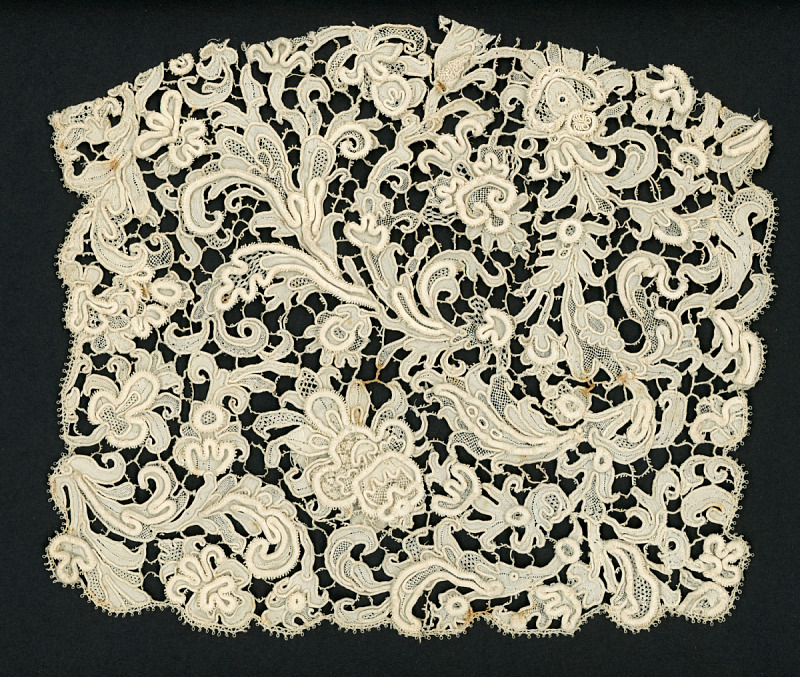
When we think of Burano, the beautiful island in Venice, the first things that come to mind are its colorful fishermen houses and cozy vibe. But if you wander into the small shops in the alleys, where old women are hidden behind the counter, you'll be amazed by another traditional aspect: the elegance and incredible lace’s craftsmanship.
Legend has it that a young sailor, bound for the Southern Seas, brought to his betrothed a bunch of that pretty coralline known to the unlearned as the mermaid’s lace, intrigued by its patterns the young woman attempted to model it in thread, and thus lace was born.
Historically, however, it is believed that lace have originated in the 15th century, and by the 16th century, Venice had become one of the major center of this craftsmanship. Today, this ancient art is experiencing a revival through innovation and technology, as thanks to contemporary designers and artists bringing new life to this tradition.

One of the representatives of a new dialogue between tradition and contemporary art and design, even if through another medium, is the American artist Dale Chihuly, who has been exploring the relation between art and craft since the late 1960s.
His works in glass (another traditional craft which characterize Venice history) are dynamic, flamboyant and color-saturated forms, pushing the boundaries of the medium and transforming glass into a powerful artistic expression.
So, it is not surprising that in 2020, Dale Chihuly decided to introduce in his new works a merletto inspiration, highlighting the beauty of traditional Venetian crafts: glassmaking and lace technique fused together.
In these last works the artist merged the delicate refinement of merletto (the Italian word for lace) with his ability of shaping glass into organic and natural forms, aiming to capture the movement of lace in glass. In particular, using white cane of filigree glass he creates intricate, organic patterns, which seems to be real laces trapped into the glass.
Another contemporary artist who uses lace in an innovative way is the Portuguese Joana Vasconcelos. Deeply inspired by the material culture of her country, she reinterprets traditional craftsmanship through her signature crocheted creations.
By merging traditional lace with solid objects like sculptures and furniture, she transforms materials traditionally associated with softness and femininity into powerful symbols of strength and resilience.
The use of crochet in a paradoxical imprisonment and protection of the object, thus relegated to the domestic context, opens a vast and rich field of interpretation released by the beauty and strangeness generated by the result of the artwork.
As a contemporary designer-maker, Joëlle Paulson aims to reinterpret the traditional craft of lacemaking, bringing it into relevance with modern life. She committed sustainability, focusing on the use of natural fibers and recyclable materials in her creations. By combining traditional techniques with metalwork and digital technologies, she creates unique furniture and furnishings that bridge heritage and innovation.
In addition to applying lace techniques to weave furniture, she has also incorporated her original lace patterns into ceramic tile. Her bas-relief tiles with original lace patterns, blends traditional craftsmanship with modern materials.
Instead of sticking to traditional lacemaking, German designer Kasia Kucharska redefines the beauty of lace by blending modern technology with new materials, giving it a fresh vibe and a new elegance.
< Fall/Winter 2025 and phone case
Back during her master's degree in fashion design, she came up with the idea of using liquid silicone to weave lace. Being a natural material, latex is biodegradable and working with its liquid form means a zero-waste production process — as well as it being more elastic, durable, and flexible.
In 2019 she turned this idea into reality with Wanda Wollinsky and Reiner Törner. She uses latex as the primary material, combining traditional lace craftsmanship with 3D printing technology to create unique fashion pieces that redefine lace design for the 21st Century.
Nowaday lace is not only associated to delicacy and fragility, but it shows us its potentials also when applied into large-scale design. Architects are drawing inspiration from lace and incorporating it into buildings' projects.
The Urcins, created by Korean design studio Choi+Shine Architects for the 2017 Singapore iLight Marina Bay festival, showcases delicate, hand-crocheted white polyester rope, transforming lace into a striking architectural element.
The project mirrors this structured, repetitive pattern and soft shapes, creating visual harmony through the contrast between nature and the built environment, as well as between the solid, towering skyscrapers and the floating, delicate form.
But without going far, and just walking along the Grand Canal in Venice, you’ll find stunning Venetian Gothic buildings on both sides. This unique architectural style of Venice recalls lace, a craft that made Venice one of the most prestigious centers for needle lace in Europe during the same period.
16th and 17th were era of the lace boom in Europe, Venice lace was exported extensively and significantly influenced fashion trends across Europe. In particular a strong push for the spread of Venice lace was given by the dogaressa Morosina Morosini, who at the end of the Sixteenth century created a laboratory in Venice, in which 130 lace makers were employed. Upon her death the workshop was closed, but the art of lace continued to be cultivated.

In mid-17th, Venice was celebrated for her needle laces. With the development of Baroque designs in the latter half of the 17th century, Venice needle lace became the most expensive, prestigious and sought-after fashion lace in Europe.
Here is a fast summary about the most famous and used points in Venice.
Gros Point is known for its intricate patterns and raised, sculptural designs. It is made by first drawing the patterns and then embroidering them layer by layer. Decorative stitches fill the spaces between patterns, while raised outlines are created using cotton stuffing covered with tight buttonhole stitches. Some outlines have double or triple relief, adding depth and texture. This special technique gives Gros Point a three-dimensional look. Because of its elegance, it was especially favored for cravats worn by noblemen at the court of Louis XIV.
< Leandro BassanoPortrait of the Dogaressa Morosina MorosiniRijksmuseum, Amsterdam, Netherlandsca. 1590
Rose Point is another type of Venetian raised needlepoint lace, less grandiose than gros point but even more ornamented with many little loops and rosettes.
Unfortunately despite its success during the previous Centuries, by the beginning of the 18th century the Venetian lace industry had declined due to the industrial revolution. It is probable that some lace was still made, but it was not until 1872 when the lace school was established on Burano, that there was any sort of revival.
The Burano lace school led innovation in lace design, bringing Venetian lace Venetian lace back into the global spotlight.
The 1930s marked a remarkable period of innovation in Italian lace craftsmanship, beginning with the Venice Biennale, the Monza Triennale, and the Milan Triennale. During this time, some of Italy’s most renowned architects and interior designers entered the field of lace design. Among them, Tommaso Buzzi stood out, introducing significant and creative advancements in lace and embroidery that helped shape a distinctive “modern Italian style”.
Today, we can not only admire traditional lace art in Venice but also see designers incorporating this timeless craft into unique contemporary designs, making their way into our daily life. This is the magic of lace - it’s soft yet resilience, able to shine in every era, from the past to the present and into the future.














